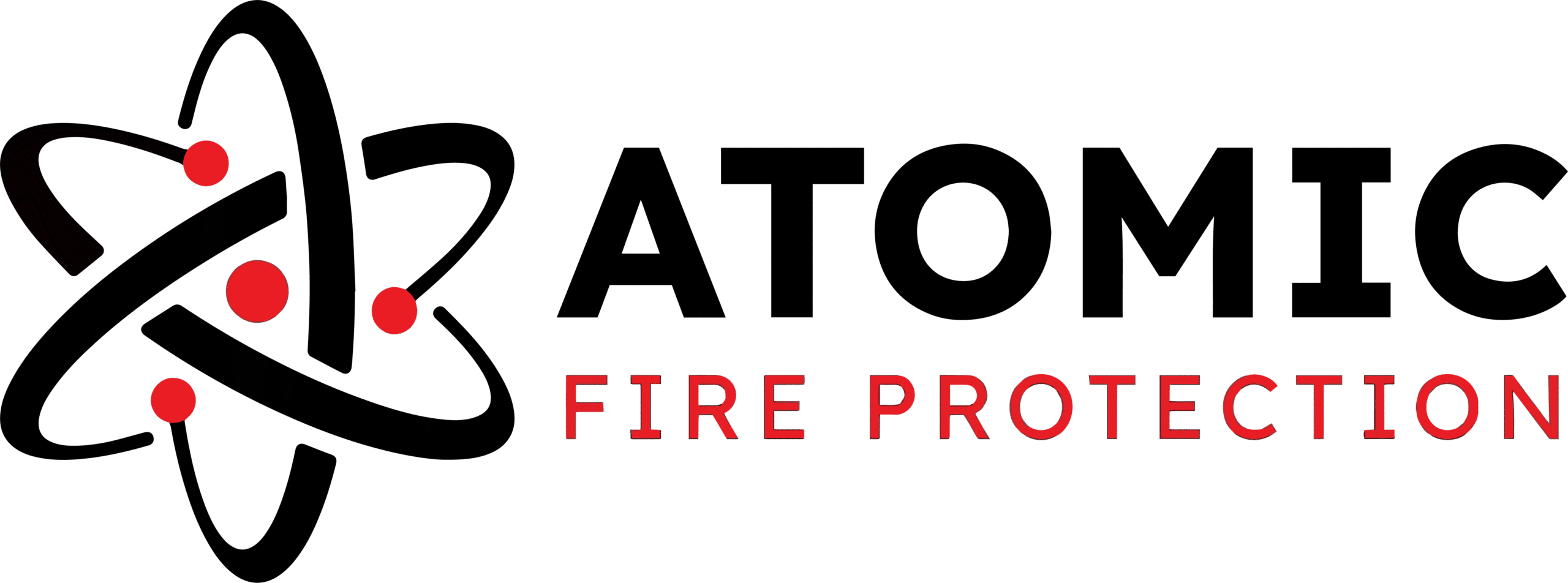Licensed Installation, Maintenance, & Inspections In Oklahoma
Fire Sprinkler Systems
Full‑Spectrum Fire Sprinkler System Services for Oklahoma Facilities
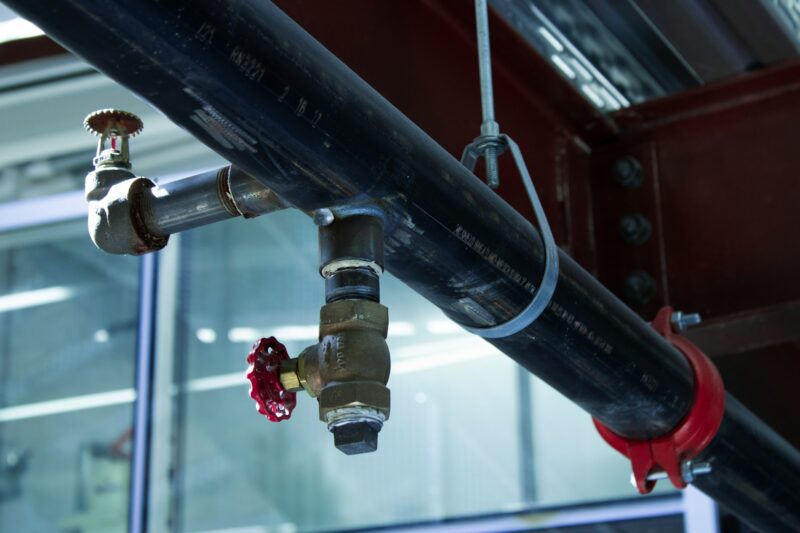
A working sprinkler network is the most effective, code‑driven way to limit fire damage and protect lives. Atomic Fire Protection designs, installs, tests, and repairs wet, dry, pre‑action, and deluge systems for assisted‑living centers, warehouses, and commercial properties across Oklahoma.
Table of Contents
Turn‑Key Design & Installation
What's Included:
-
Plan review & hydraulic calculationsSubmitted to the State Fire Marshal’s office for permit approval (NFPA 13/20/25).
-
Hazard‑specific layoutHead spacing, pipe size, and zoning are matched to your commodity class.
-
Wet, dry, or antifreeze loopsSolutions for everything from unheated attics and loading docks to exterior canopies.
-
Licensed executionWe employ only Oklahoma‑licensed sprinkler fitters and NICET‑certified designers.
-
Functional acceptance test & final walk‑throughYou receive sign‑off documentation and a one‑year installation warranty.
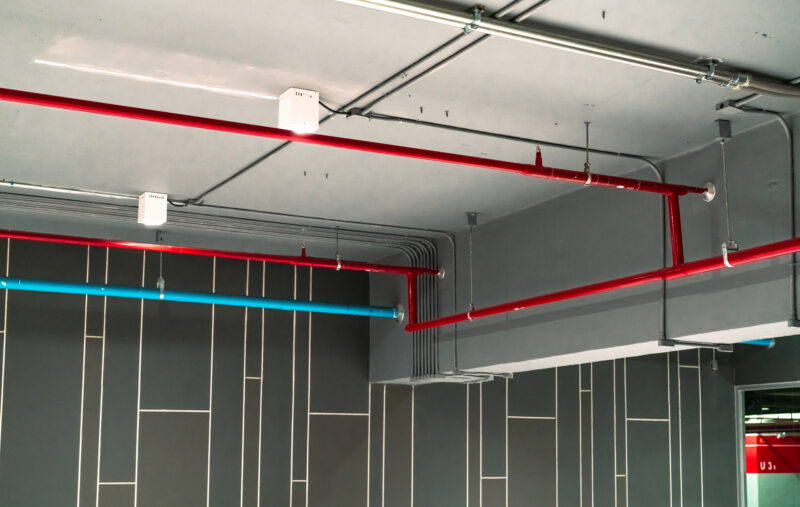
Installation FAQ
Atomic offers routine maintenance, repair, and installation of fire sprinkler systems across Oklahoma. Our inspections are quarterly, semiannual, and annual, with five‑year internal obstruction assessments available.
We submit and approve plans to install fire sprinkler systems based on a building’s suggested system size, calculations, and hazards it is protecting against. Install plans are subject to NFPA and AHJ standards.
Cost varies based on the size of the property. Most of our customers already have fire sprinklers installed and we maintain them, but we are certified to install new systems as well. Contact us for an estimate!
Fire sprinklers come in a variety of setups. The two most common systems are:
Wet sprinkler systems are under constant pressure in the pipe. The sprinkler heads are heat-rated and once they reach a certain temperature, the glass or link in the sprinkler head breaks, causing water to burst out.
Dry systems are under constant air pressure. Once the air pressure is compromised and released, the dry valve at the sprinkler riser releases the water, which fills the system and escapes out of the sprinkler heads or open holes in the system.
The benefits of fire sprinkler systems:
- Reduce fire damage to property
- More likely to save lives
- Only the heads that are activated will go off on these systems
This depends on your city’s requirements. Most new commercial builds require fire sprinkler systems. Contact us to find out what your city requires.
Only a licensed fire sprinkler technician working for a licensed fire sprinkler company can install and service fire sprinkler systems in the state of Oklahoma.
Yes. Installers must be licensed and work for a licensed fire sprinkler company.
Our senior fire sprinkler installer has been licensed for 20 years, so your building will be in expert hands!
It depends on the building size and requirements.
- Assess business and design plans
- Obtain permit
- Installation
Usually, sprinkler systems are already installed in an existing business, but there are Tenant Improvement projects where the sprinkler systems are made to fit the tenant moving in.
There are several spacing requirements for sprinkler systems, including:
- Sprinkler heads have to be a minimum of 6’ away from each other but no more than 15’ away from each other.
- Sprinkler heads must be a maximum of 7.5’ from the walls.
Most definitely.
We assess the environment. If it is a colder climate or the building doesn’t have heaters in its attic, or there is an outside area / awning that has sprinklers, we recommend a dry system or have antifreeze loops to prevent systems from freezing up during the cold weather. Some of our customers have both wet and dry systems based on what their business needs.
Preventive Maintenance & Testing Services
Schedule Fire Sprinkler maintenance in advance to keep your facility compliant:
-
Quarterly inspection of assisted‑living & high‑risk occupancies (Every 6 Months)Visual riser check, main drain, control valve exercise, alarm device test
-
Annual full inspection (Every 12 months)Waterflow test, inspector’s test, head walk, gauge read‑outs, spare‑head box audit
-
Five‑year internal obstruction (Every 5 years)Pipe opening at riser & remote point, borescope if needed, gauge replacements, corrosion assessment
-
Fire‑pump run & flow (if applicable) (Every 12 months)Start‑up logs, RPM & pressure curve, relief‑valve test, diesel fuel checks
-
Backflow preventer testing (Every 12 Months)Differential pressure test with state‑filed paperwork
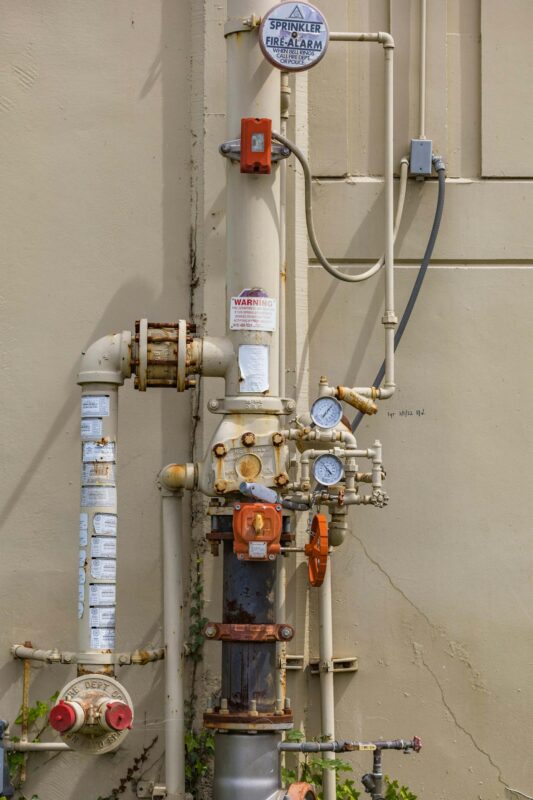
Maintenance FAQ
We conduct routine maintenance and perform quarterly, semi-annual and annual inspections. We also offer 5 year internal obstruction inspections.
Sprinkler gauges must be replaced every 5 years, which we take care of.
If the building has a fire pump, we perform routine pump runs.
We work on wet, dry, pre-action, and deluge systems, as well as fire pumps and backflow preventers.
Stop surprise violations—let us handle your maintenance calendar.
Compliance Inspections & Reporting

| What We Deliver | Why It Matters to You |
|---|---|
| System activation & valve exercise | Keeps components from seizing and proves alarm signaling |
| Head & coverage survey | Ensures that remodeling or stacked inventory hasn’t blocked spray patterns. |
| Deficiency tags | Green ✓, Yellow ⚠, or Red ✗ per Oklahoma Fire Marshal guidelines for instant visual |
| Same‑day PDF report | You have a record of devices, static/flow pressures, code citations, and repair quotes. |
| State Marshal Office Notification | We submit your inspection reports to keep your property up to date with the city |
Inspections FAQ
An annual inspection includes:
- Testing the waterflow switch that is commonly tied into an electric bell / fire alarm.
- Testing the drain, control valve, inspector’s test valve
- Checking the gauges and reading the pressures while flowing water through the system.
- Conducting a sprinkler head walk to ensure there’s proper coverage and the sprinkler heads are in good condition
- Looking at any obstructions that may be blocking the sprinkler heads.
- Checking when the last 5 year internal obstruction test was done
- Ensuring the sprinkler head box has the proper amount of spares and a wrench.
- Verifying all dry system components are working and lines are clear of water
During a quarterly inspection, we:
- Check the control valve, main drain and inspector’s test.
- Ensure that signals are reported to a fire panel or by the electric bell or water motor gong
Quarterly inspections are less intensive than an annual but we ensure that the basic components are functional.
Fire sprinkler systems should be inspected annually.
Assisted living facilities need quarterly inspections.
Every sprinkler system should have 5 year internal obstruction inspections.
Costs depend on the size of the system / building. Most nursing homes are around $375. Some systems are $150 to inspect. A 5-year internal obstruction inspection is usually $600 per riser / system.
We inspect commercial properties, apartments, assisted living facilities, warehouses, restaurants, and stores. We rarely inspect residential.
We follow NFPA code books when it comes to testing all fire protection equipment. Sprinklers fall under NFPA 13 but several other books apply to testing and fire pumps – NFPA 20 and NFPA 25.
After we schedule the inspection, there generally isn’t any preparation the customer has to do.
Rarely, the inspector’s test or main drain is next to a parking lot, so we warn the business that water will be flowing out of the building and to move any cars close by.
Our inspectors have an Oklahoma Department of Labor Inspector and Technician license. They are also certified for backflow inspections.
If the inspection reveals critical deficiencies, we are obligated to notify the fire marshal and keep the office updated on the repair.
If there are deficiencies, we yellow tag a system. If the deficiencies make the system inoperable, we red tag the system.
Need a current inspection sticker before year‑end insurance renewal?
Why Oklahoma Facilities Choose Atomic Fire Protection

Family-owned and operated by Oklahomans
Work with a team that treats every facility like a neighbor’s—fast answers, no out‑of‑state red tape, and decisions made for Oklahoma’s codes and climate.

3 generations of expertise
Decades of real‑world insight mean fewer callbacks, smoother fire marshal approvals, and solutions that anticipate problems before they happen.
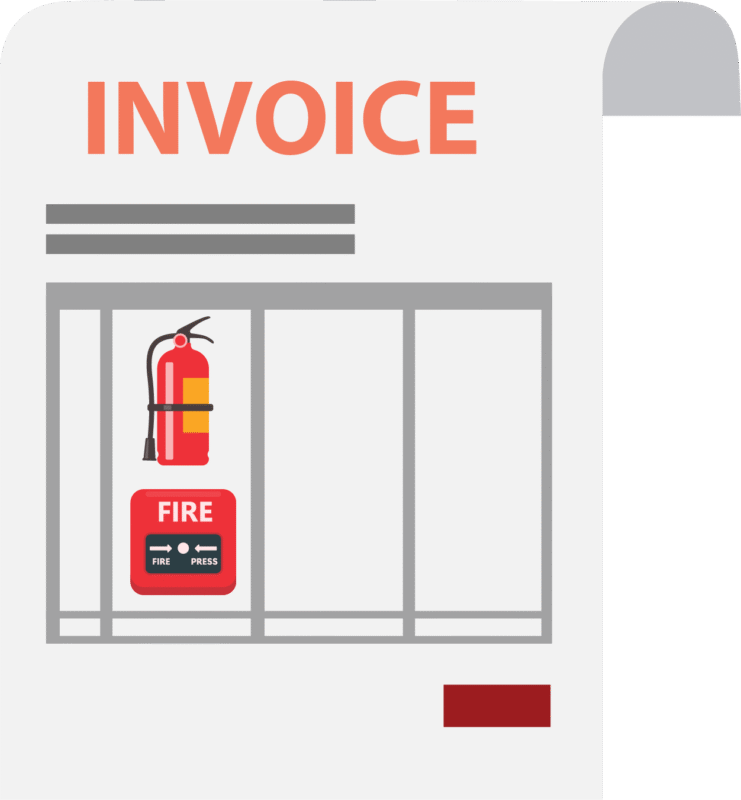
One-stop shop for assisted living facilities
Fire alarms, sprinklers, extinguishers, hood suppression, nurse‑call, access control—one vendor, one inspection schedule, one invoice.
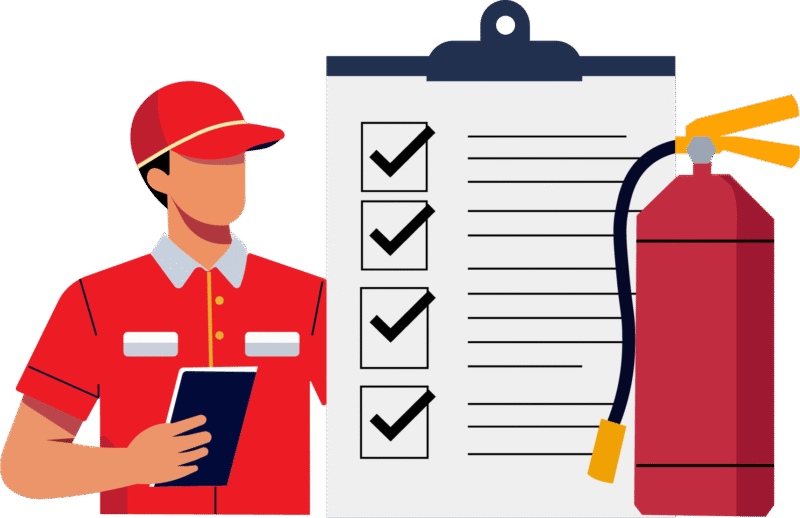
Experienced Licensed Professionals
State‑certified techs get it right the first time, keeping you compliant, avoiding fines, and minimizing disruption to residents or production.
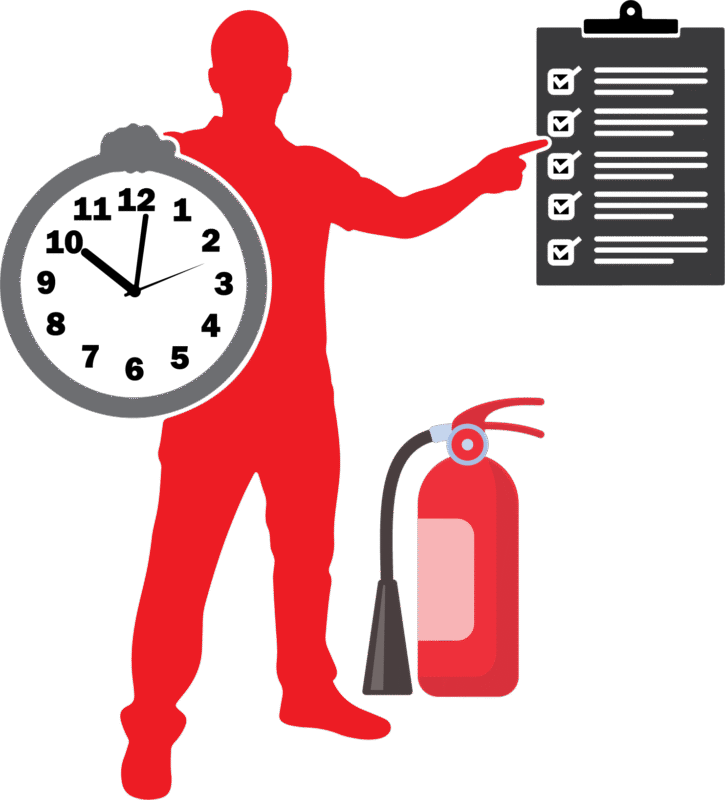
Timely Inspections
We ensure you stay current on every life‑safety inspection, saving staff time and eliminating last‑minute scramble before audits or insurance renewals.

Emergency 24/7 Service Available
A technician responds day or night, restoring critical systems quickly so you avoid costly shutdowns and protect lives around the clock.
